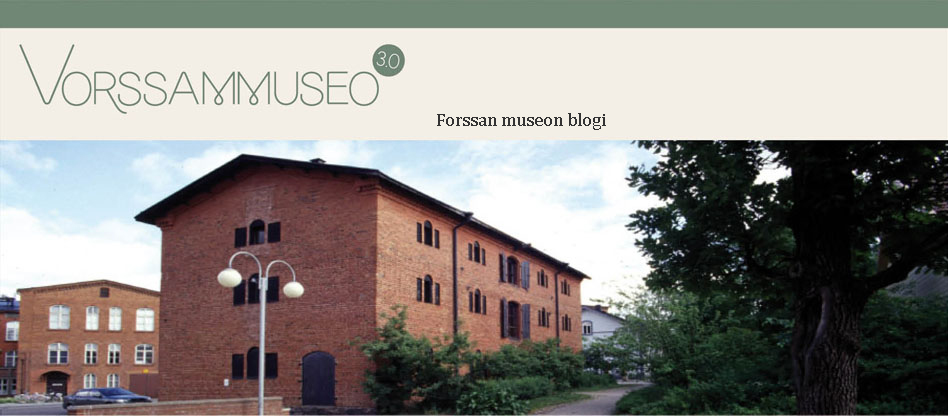 |
| A detail of work by student of Arts School for children and people. Photo: Teija Lauronen. |
The project began in September 2016 at Forssa museum and will end in March 2017. The project involves an assembled Cotton diaries- exhibition in the Vinkkeli exhibition space, as well as a seminar, organised in conjunction, where textile heritage and museums will be considered from the aspect of learning and insight.
The activities relating to the Wear & Share project will branch out in many directions. Tanja Härmä, who has held a central role in the activities, states:
The Textile Heritage Project at Forssa Museum is comprised of two tasks in their entirety, with which I have been assisted by Alina Rämö and Pinja Heinilä. The first task has involved the digitalisation of fabrics donated by Ulla Nummikoski, along with the connected work phases: sorting, measurements, the perceiving of reports, markings, photography and cataloguing. After the cataloguing, the fabrics will be present in the Piipunjuurella database.
 |
| www.piipunjuurella.fi |
Alongside these main activities, there are also sample sheets, also known as pattern cards, for utilisation in creative workshops. The sorting out of pattern cards in those to be preserved in the museum collections and in those to be used in workshops and for making the museum shop products lasted a total of two years. The sorting activities that required great concentration were carried out intermittently, by a great many people. The sample sheets are a unique summary of the Finlayson Forssa textile industry, because the cards have examples of all the fabrics that were manufactured in Forssa between the 1960-80s. Inspired by the colourful samples, the activity began at Forssa Art School and Wahren College.
 |
| A detail of work by student of Arts School for children and people. Photo: Teija Lauronen. |
 |
| Calligraphy in the making, Photo: Vivian Majevski. |
In addition, students from the Textiles and Clothing department of Forssa Vocational Institute were involved in the project, in connection with their studies. Karita Stenfors-Selkälä says:
"Tanja Härmä was present at the beginning of the textile heritage project. We pondered, in groups of ten students, general dress codes and fashion. We considered that we could buy fashion garments aimed at young people from some international clothing chain stores. We will then try, in cooperation with clothing chains, to investigate the origin of the products; where the product has been made, what materials have been used, what kind of dyeing process has been used and how has the product been transported to Finland. We also try to clarify the life cycle of the products, as well as the aspects relating to the journey of the product after its use in Finland. We try to present a vivid picture report of all of this."
And what will happen in the multicultural Södertälje and the domestic location of Bang & Olufsen in Struer? We’ll return to this later!

The project received a Capacity Development
grant from the Nordic Culture Point.
Translation in English: Darin Nolan.





